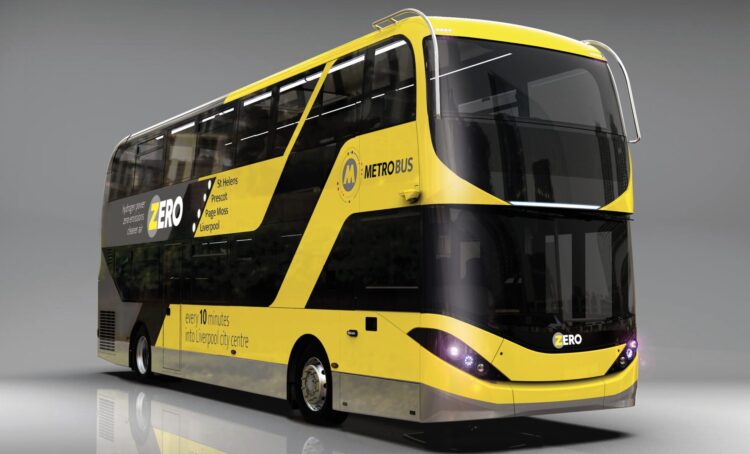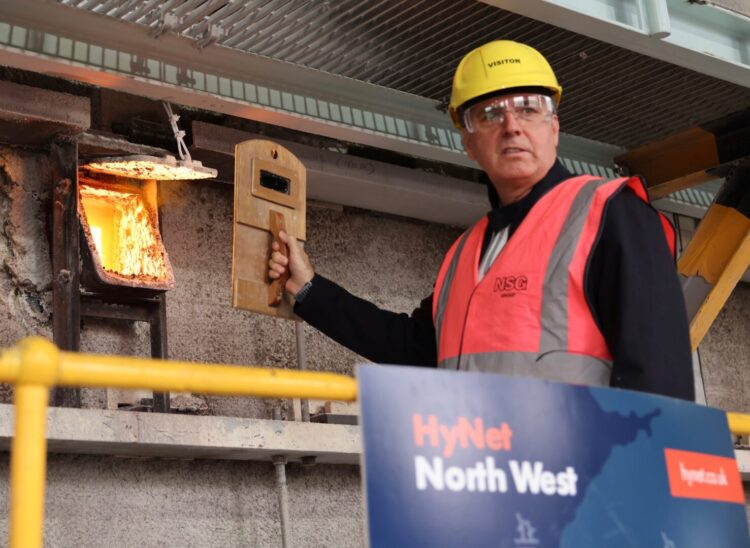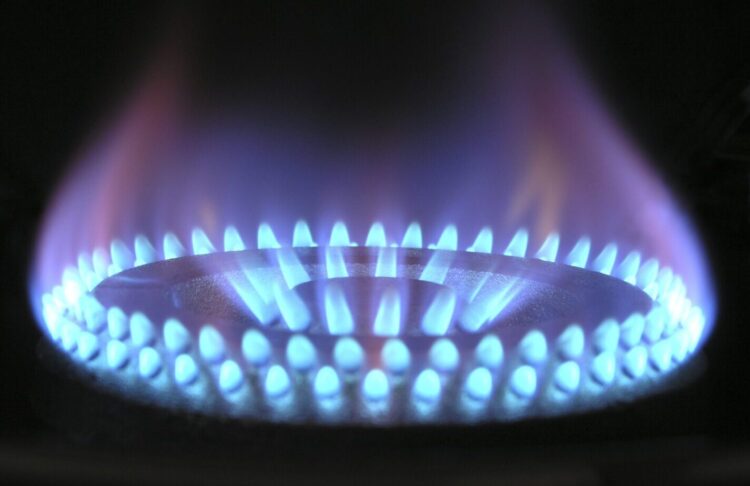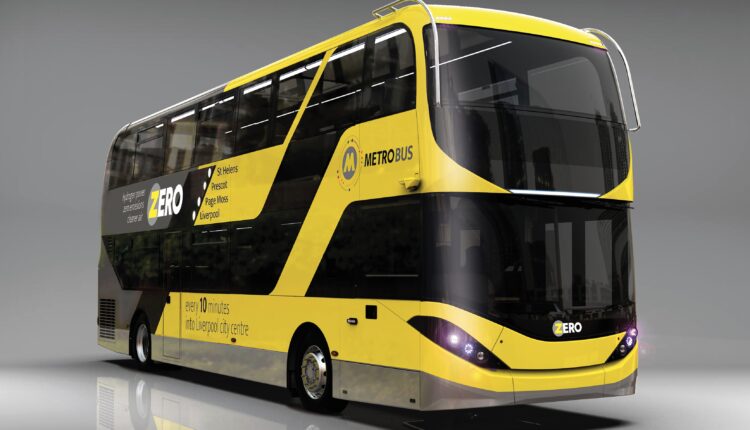Special report: Hydrogen is set to play a critical role in Liverpool city region’s push towards net zero carbon – but it may not be as green as we would like to think. Tony McDonough reports

During the past few days there have been two big announcements in the Liverpool city region on the use of hydrogen as a way to slash carbon emissions and help fight climate change.
On Wednesday last week, St Helens glassmaker Pilkington began a trial at its factory, making float (sheet) glass using hydrogen instead of natural gas. This is believed to be the first large-scale demonstration of 100% hydrogen firing in a live float (sheet) glass production environment anywhere in the world.
And on Friday, Liverpool City Region Metro Mayor Steve Rotheram offered an update on his plan to introduce a 20-strong fleet of hydrogen-powered buses onto the streets of Merseyside. Both the Pilkington pilot and the bus project form part of Mr Rotheram’s big plan to accelerate Liverpool city region’s journey to becoming net zero carbon.
It is tempting to believe that hydrogen provides a straightforward, transformative solution to slashing carbon emissions in industry and transportation. However, as so often in life, the reality is not quite that simple.
The question isn’t just whether or not we use hydrogen. It is also about how that hydrogen is produced. More specifically… is the hydrogen we are using grey, blue or green? The answer to that question determines whether we really are cutting carbon emissions or whether we are just ‘greenwashing’.
According to the International Energy Agency, 96% of hydrogen produced across the world each year is made using fossil fuels, including coal, oil and natural gas. In a process called ‘reforming’ fossil fuels are mixed with steam and heated to 800°C. This process produces carbon dioxide ((CO₂) and hydrogen.
When the two are separated the CO₂ usually ends up being released into the atmosphere and contributing to the dangerous build-up of greenhouse gasses. The extracted hydrogen can be stored indefinitely and used in a variety of ways, including for making glass or powering buses. All that is released at the end of the process is water vapour.
So here is where we start to drill down into the finer detail and see how green using hydrogen really is:
Grey hydrogen
This method of producing hydrogen offers no environmental benefit. Grey hydrogen is generated from natural gas, a very commonly-used fossil fuel, comprising methane and ethane, which you will find in your gas boiler or kitchen stove at home. So the CO₂ emissions from this process are huge.
Blue Hydrogen
Much hope is being pinned on blue hydrogen, including by the UK Government, as at least an interim method of producing hydrogen. It is far from perfect, still generating significant emissions. But still lower than grey hydrogen production.
It has the same starting point as grey hydrogen, burning natural gas. Instead of being released into the air and contributing to the greenhouse effect, the CO₂ is captured and stored. However, as we will come back to further on in this article, the method is not quite as green as it first appears.
Green hydrogen
As the name suggests, green hydrogen is the best option of all for slashing carbon emissions and meeting our climate change targets. It generates hydrogen via wind or solar energy, using a process called electrolysis, and is emission-free. However, this is not yet widely available at scale or at an affordable cost.

So we come back to our Liverpool city region projects. Which colour hydrogen will make the glass and power Steve Rotheram’s buses?
The Pilkington trial is part of the wider North West Hynet project, a multi-billion pound initiative that aims to transform the region into a global powerhouse for production and use of hydrogen.
A further HyNet trial is being held at Unilever in Port Sunlight later this year. Together, the demonstrations will support industry across sectors such as glass, food, drink, power and waste to convert to hydrogen.
Both trials are using hydrogen provided by gas giant BOC. This means they will be using grey hydrogen, the method with no discernible environmental benefit at all. However, Hynet insists grey hydrogen is being used initially just to test the viability of the projects. Its plan is to eventually switch to blue and green hydrogen.
David Parkin, HyNet project director, told LBN: “The HyNet hydrogen trial at Pilkington uses grey hydrogen supplied from BOC. The purpose of the trial is to demonstrate the safe and reliable use of hydrogen in the manufacturing environment, such that when low carbon hydrogen is available in the future the transition from natural gas can be made.
“Grey hydrogen is being used as there is currently limited supply of low carbon hydrogen particularly for short duration demonstration trials. Low carbon hydrogen will be supplied to Pilkington and industry across the North West by the HyNet project from the mid-2020s.
“HyNet hydrogen production uses ‘blue’ hydrogen technology, as this offers the best route to supplying low carbon hydrogen at scale in the short to medium-term.
“However, HyNet’s hydrogen pipeline and storage infrastructure is designed such that low carbon hydrogen of all types, including green hydrogen, can be distributed to industry, transport and homes when it becomes available.”
Liverpool City Region Combined Authority is not yet ready to announce how the hydrogen to power its buses will be produced. However, it is almost certain the vehicles will use blue hydrogen. There is a suggestion the hydrogen may be captured as a byproduct of existing industrial processes.
A new report from Cornell, one of the leading universities in the US, questions how environmentally friendly blue hydrogen really is. Robert Howarth, professor of ecology and environmental biology, together with Mark Z Jacobson, professor of civil and environmental engineering at Stanford, were the authors of the study.
Prof Howarth says: “In the past, no effort was made to capture the carbon dioxide byproduct of grey hydrogen and the greenhouse gas emissions have been huge. Now the industry promotes blue hydrogen as a solution.
“This is an approach that still uses the methane from natural gas, while attempting to capture the byproduct carbon dioxide. Unfortunately, emissions remain very large.”
He added that methane is an even more powerful greenhouse gas than CO₂. It is more than 100 times stronger as an atmospheric warming agent than carbon dioxide when first emitted. Methane is released when the natural gas is extracted and also leaks during the process. Also, not all the CO₂ is captured. Between 5% and 15% escapes.
The report acknowledges that blue hydrogen is a better option than grey hydrogen but claim it will only lower greenhouse emissions by between 9% and 12%. The report states: “Blue hydrogen as a strategy only works to the extent it is possible to store carbon dioxide long-term indefinitely into the future without leakage back to the atmosphere.”
And Prof Howarth added: “Political forces may not have caught up with the science yet. Even progressive politicians may not understand for what they’re voting. Blue hydrogen sounds good, sounds modern and sounds like a path to our energy future. It is not.”

The debate over blue hydrogen is also being played out here in the UK. The Government sees blue hydrogen as a short-term bridge to the time when green hydrogen can be produced cheaply and at scale.
In a statement to The Guardian, the Department for Business, Energy and Industrial Strategy, said using both green and blue hydrogen would “allow us to kickstart an entire industry from scratch that creates tens of thousands of jobs and unlocks billions of pounds worth of private investment.”
“Achieving the scale we need would be more challenging if we just used green hydrogen,” the spokesperson added.
However, environmentalists believe the Government’s strategy for switching from blue to green is too vague. They fear it may give the fossil fuel industry licence to continue to enable the release of dangerous carbon emissions longer than necessary.
Even one of the Government’s own advisors has warned the strategy needs to be clearer. David Joffe, the head of carbon budgets at the Committee on Climate Change, insisted the process of switching from blue to green must begin in earnest by the late 2020s.
“Blue hydrogen is not an amazing solution, and we don’t embrace it unreservedly,” he said.
The Hynet pilots at Pilkington and Unilever, and Steve Rotheram’s hydrogen buses, are definitely a step in the right direction. The buses also offer the added benefit of not spewing out deadly emissions from dirty diesel fuel. They will certainly help reduce pollution in the city region.
“82% of all journeys on public transport in our region are taken by bus and this new fleet will give people a clean, green and comfortable way to get about,” said Mr Rotheram. “We want to be doing our bit to tackle climate change and improve air quality across the region too. These buses will be a really important part of making that happen.
However, the challenges around producing truly green hydrogen, as outlined above, illustrate how getting to a net zero carbon society isn’t going to be as easy as we would like it to be.

